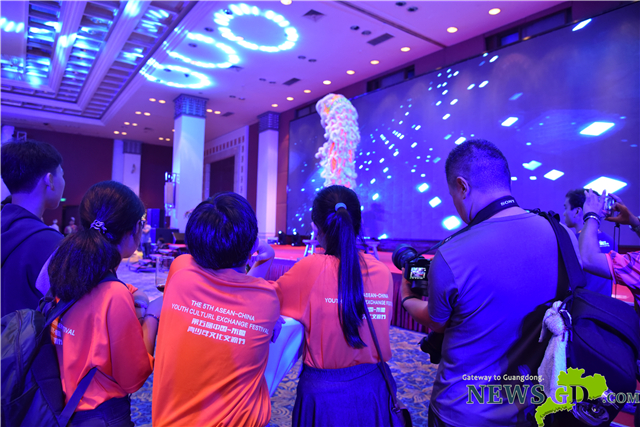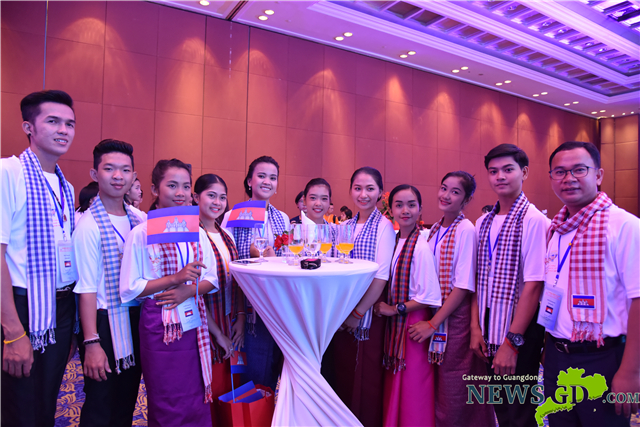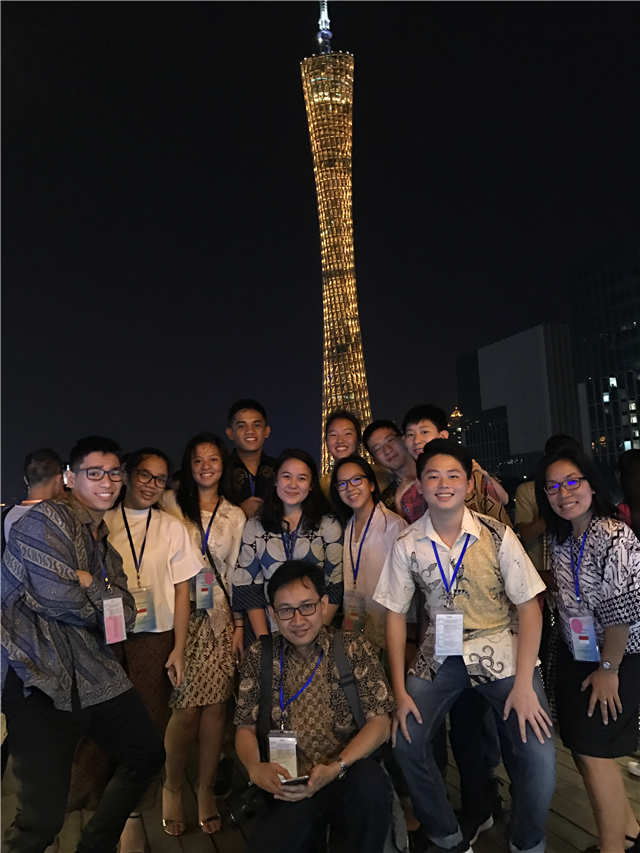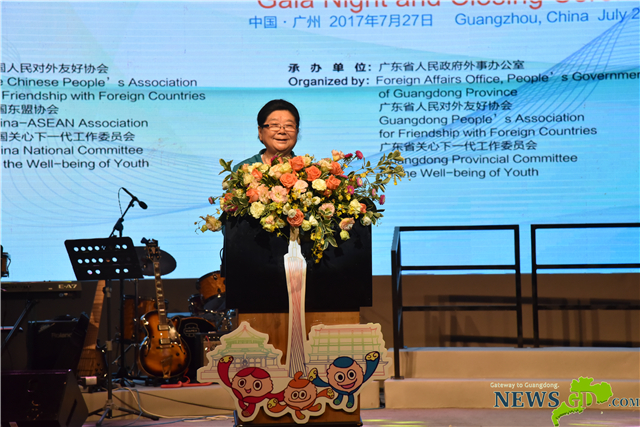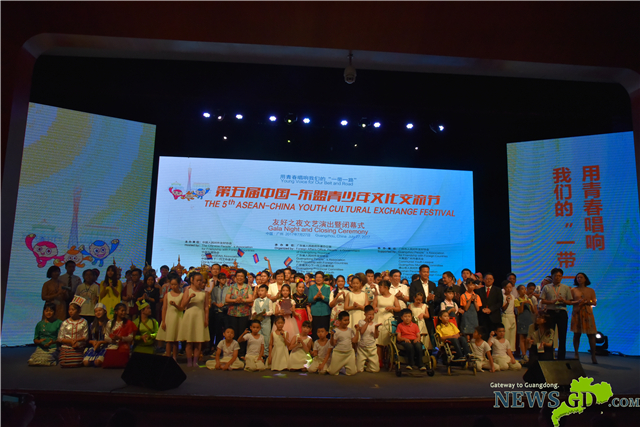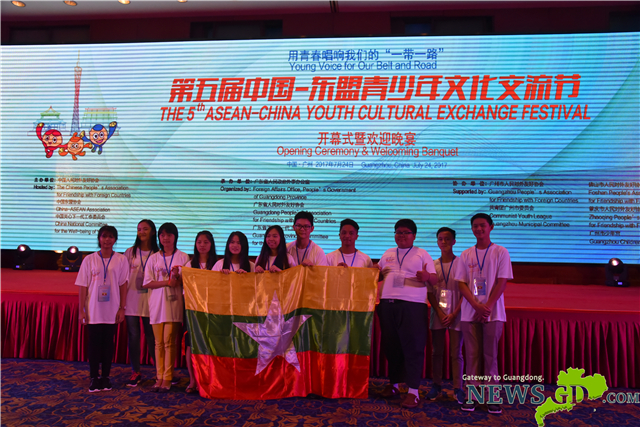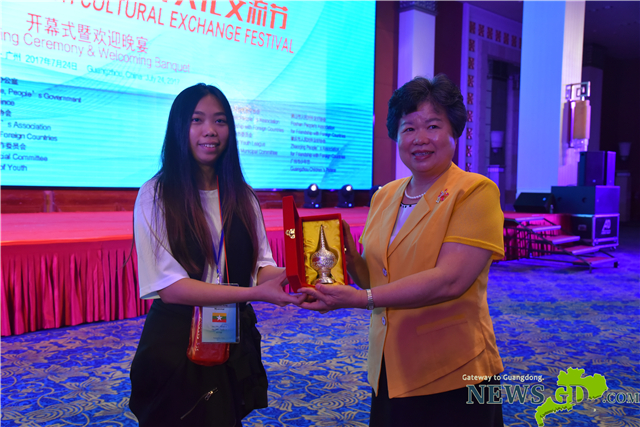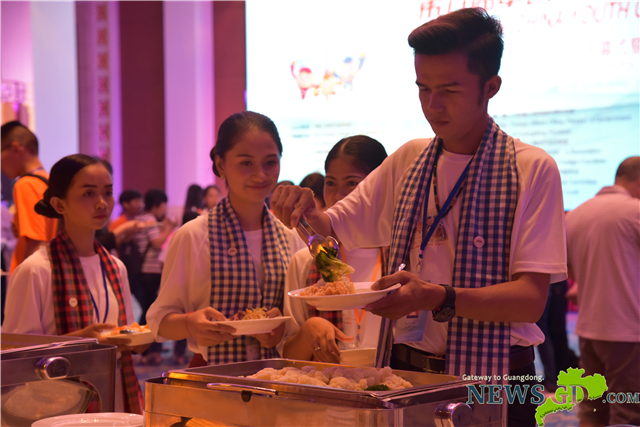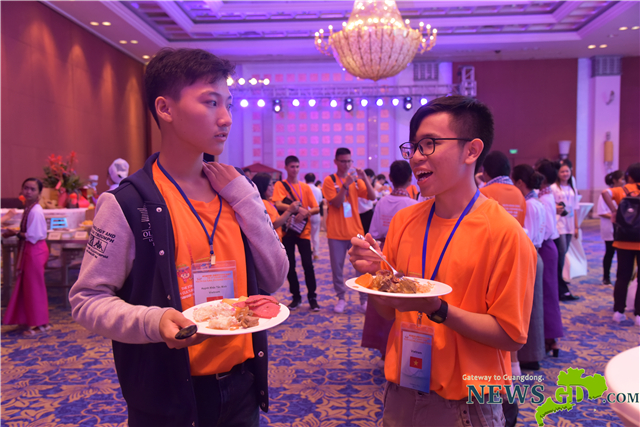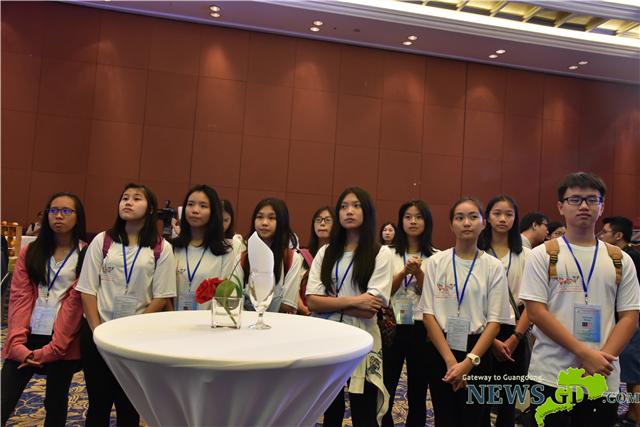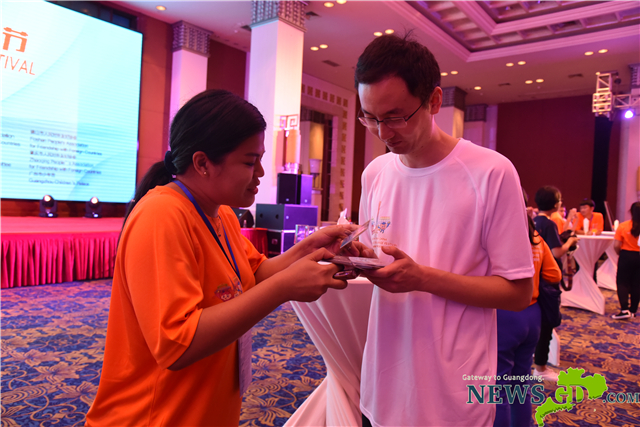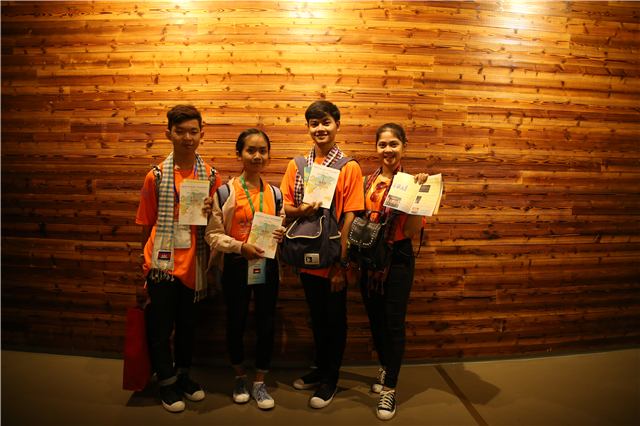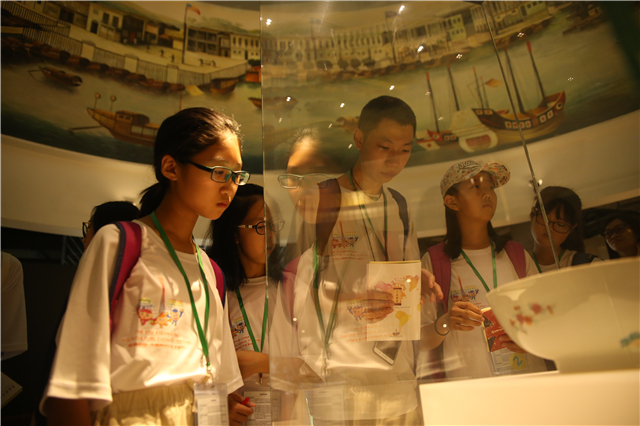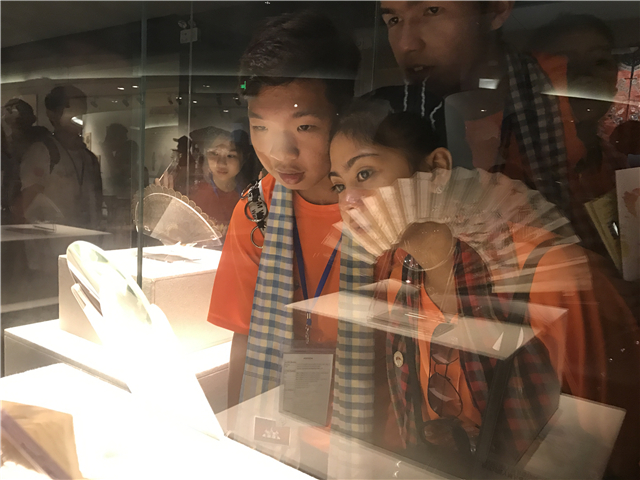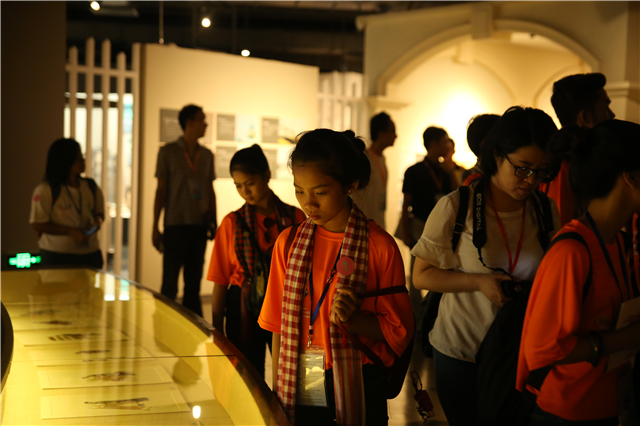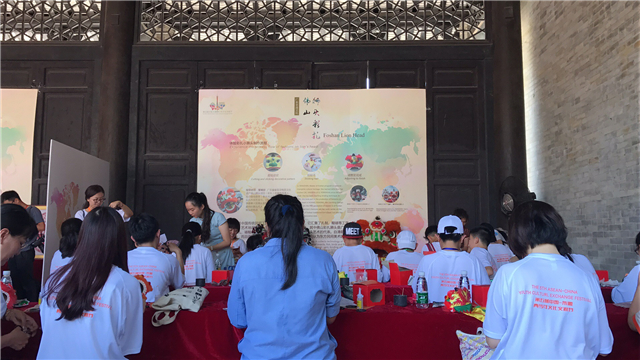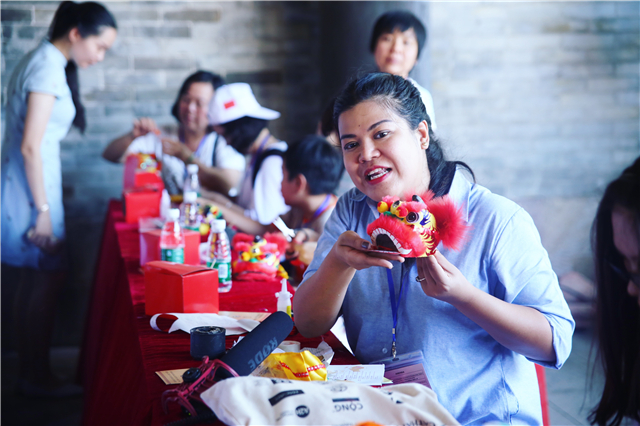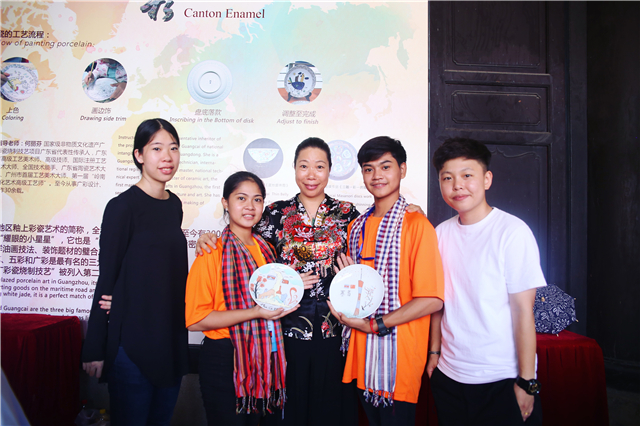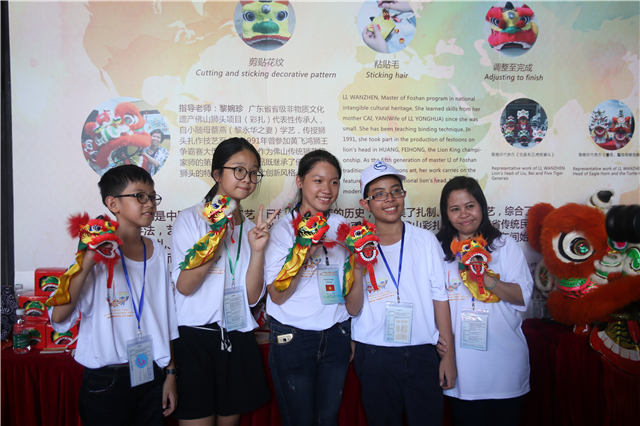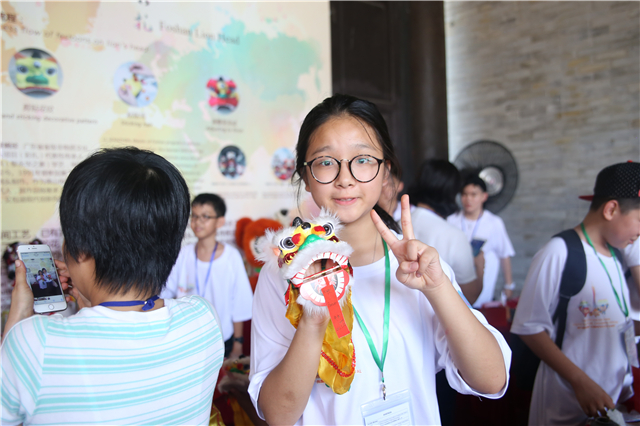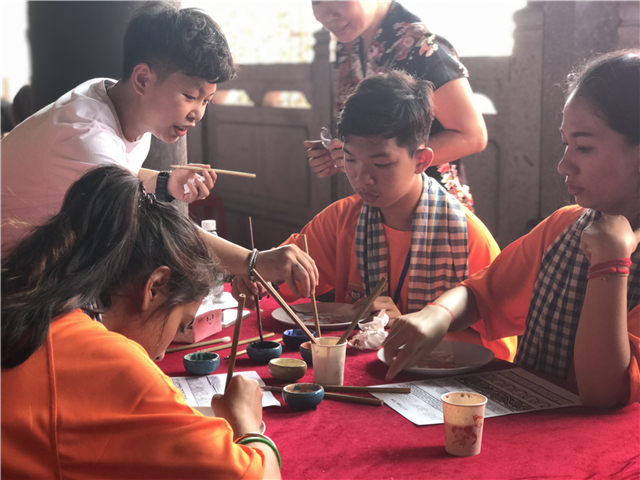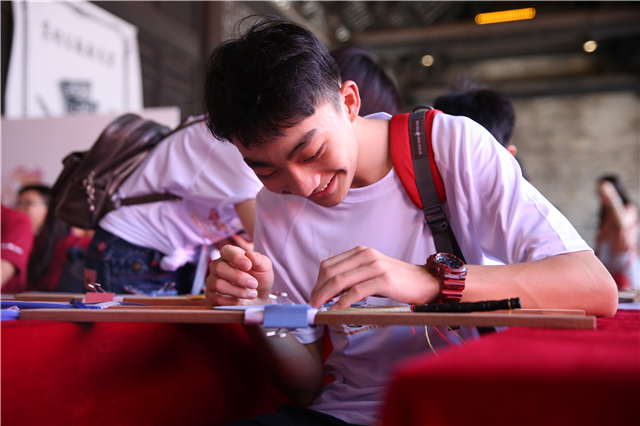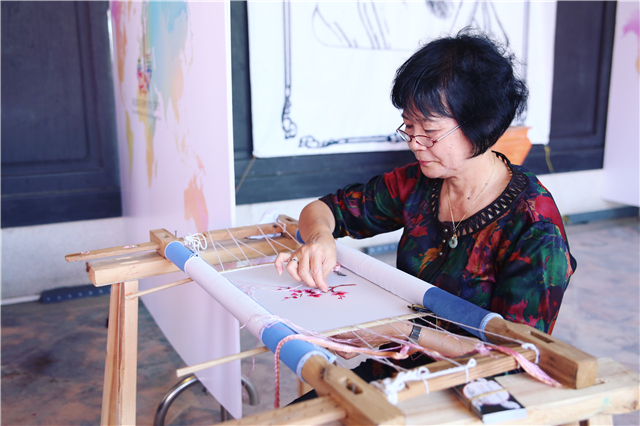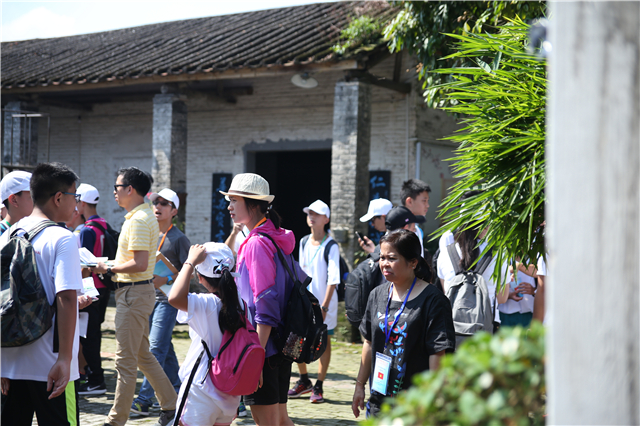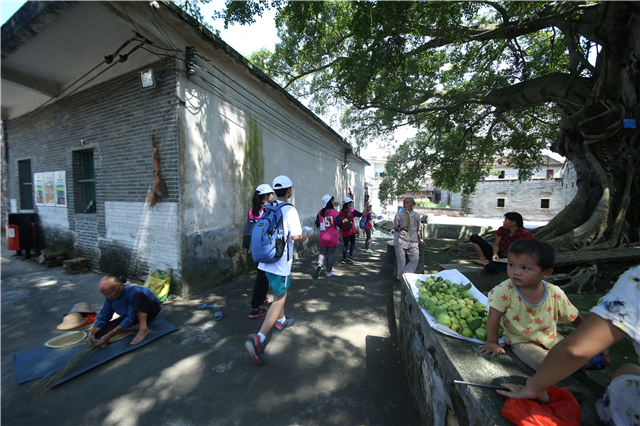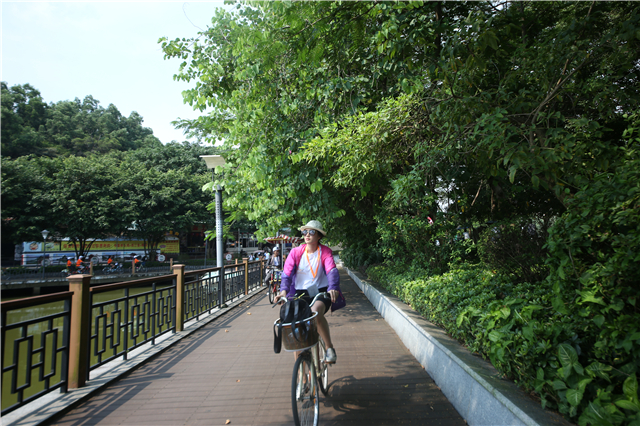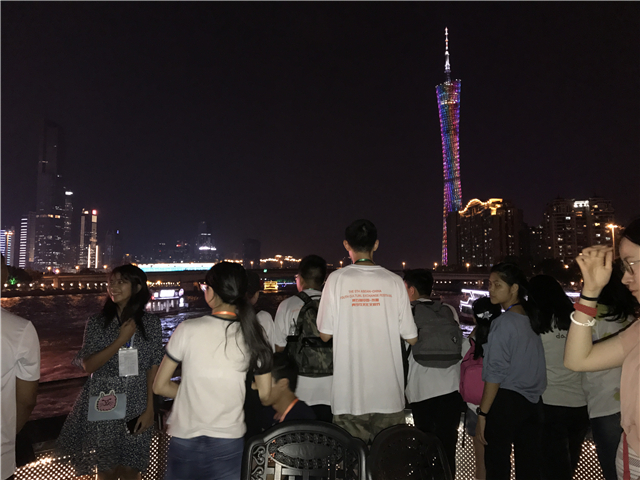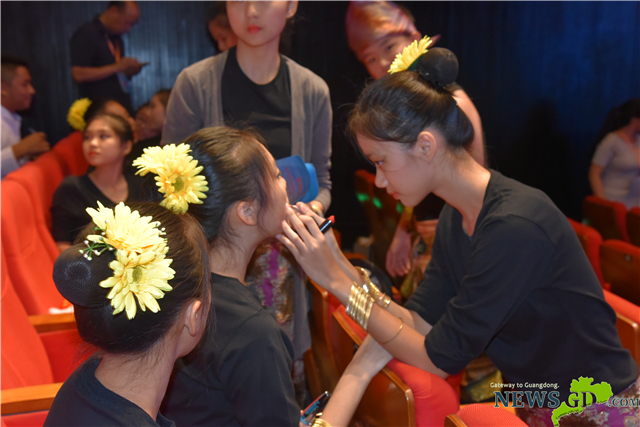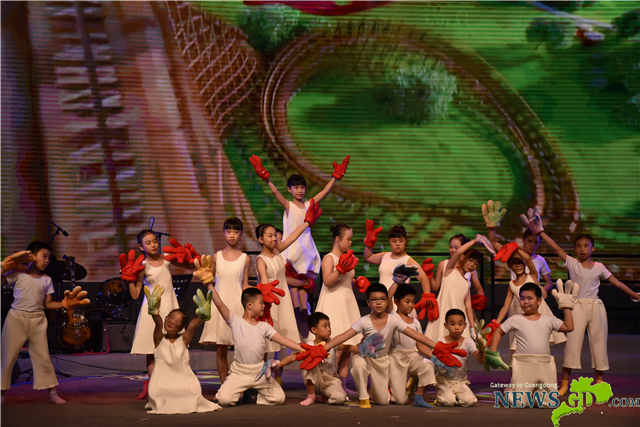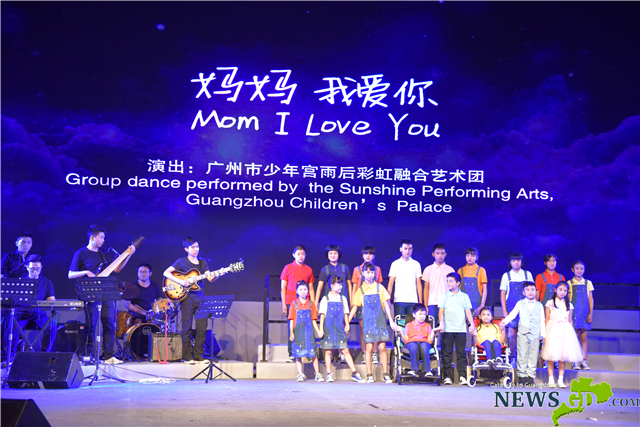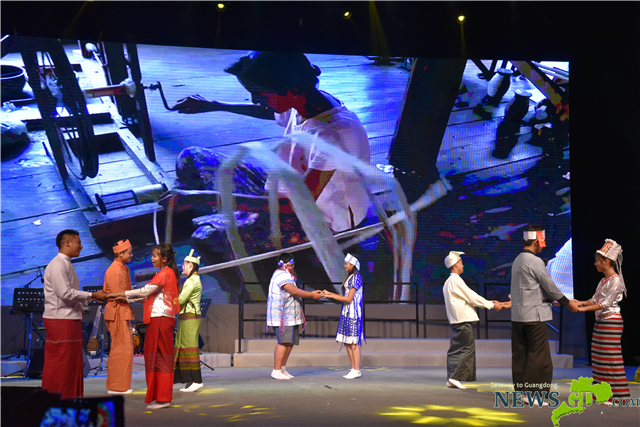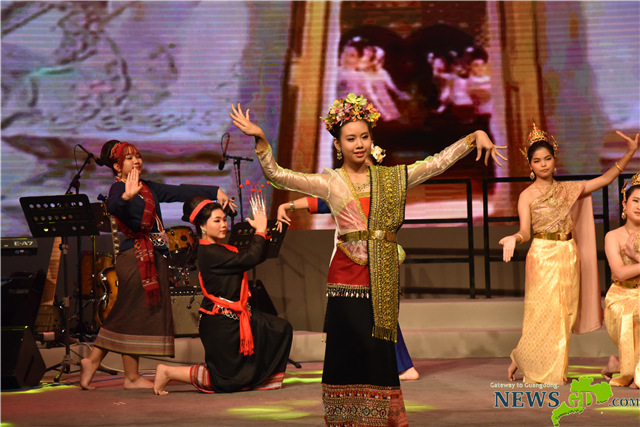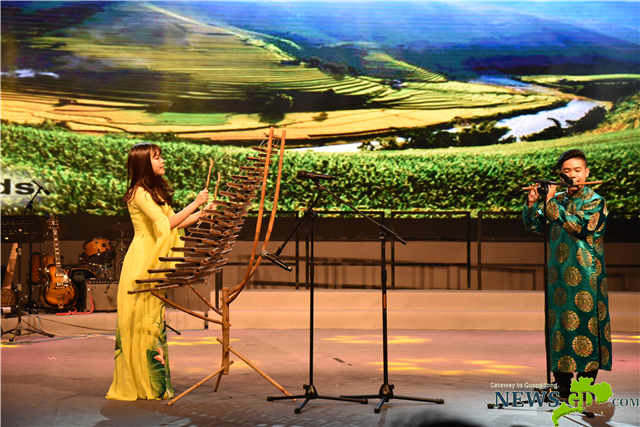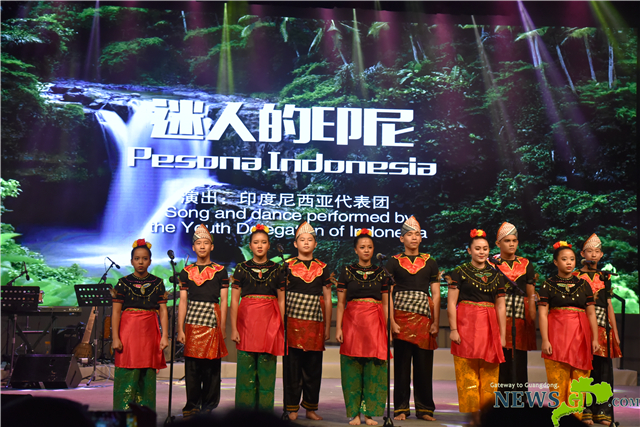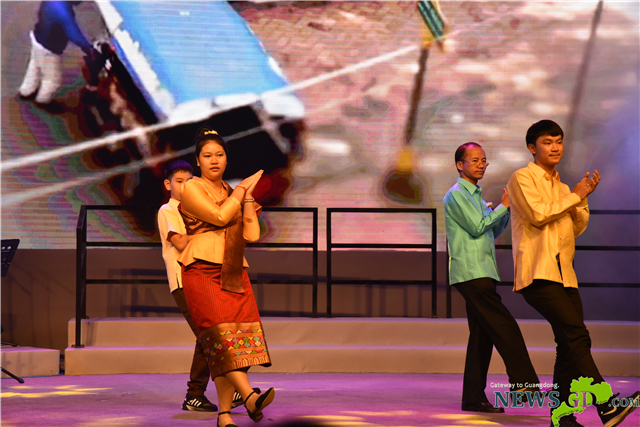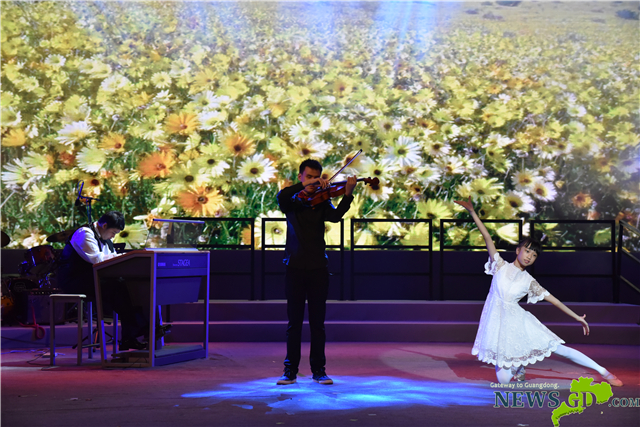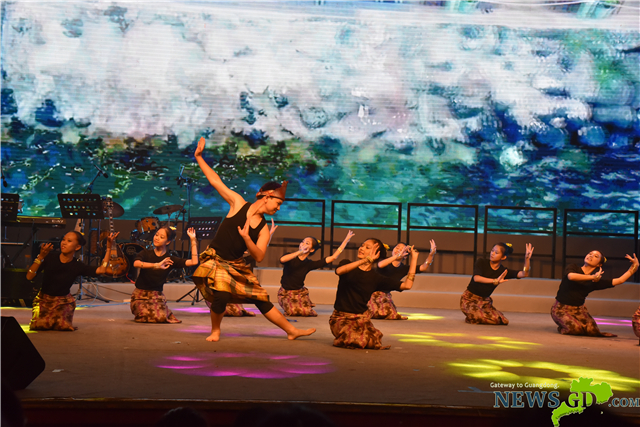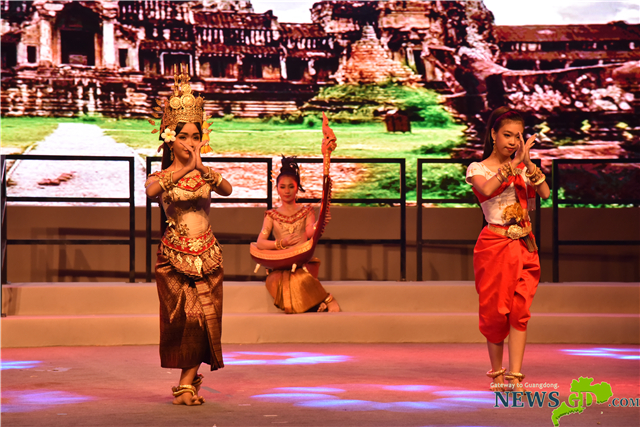An opening ceremony of the 5th ASEAN-China Youth Cultural Exchange Festival is held at the Dongfang Hotel in Guangzhou on July 24, 2017. [Photo: Newsgd.com/Monica]
The 5th ASEAN-China Youth Cultural Exchange Festival was held in Guangdong from July 24 to 28, 2017. Over 70 youngsters aged 12-18 from 7 ASEAN member states, including Cambodia, Indonesia, Laos, Malaysia, Myanmar, Thailand and Vietnam as well as more than 100 Chinese teenagers attended the event. During the event, the ASEAN youth visited Guangzhou, Foshan and Zhaoqing to carry out in-depth exchange with Chinese youngsters and take part in a series of cultural exchange activities.
A lion dance is performed at the opening ceremony. [Photo: Newsgd.com/Monica]
At the opening ceremony of the festival at Guangzhou’s Dongfang Hotel on July 24, teenagers from Guangzhou staged hip pop dance, Cantonese song, Lingnan style puppet show and put on martial arts performance, which wowed the ASEAN youth.
The Cambodian delegation pose for a group photo at the opening ceremony. [Photo: Newsgd.com/Monica]
At the opening ceremony, two high school girls from Myanmar told the reporter that this was their first time to visit Guangzhou and they already made new friends from Thailand and Cambodia. One of the girls said she was very interested in history, so she was very excited about visiting Guangdong Museum in the next day, so as to know more about Guangzhou and China.
Teenagers show their artworks of Foshan Festoon Lion Head at the Shunde Bijiang Ancestral Hall. [Photo provided to Newsgd.com]
July 25 was the Guangdong Intangible Cultural Heritage Experience Day. China and ASEAN youth visited Guangzhou Thirteen Hongs Museum, Guangdong Museum, and Shunde Bijiang Ancestral Hall. In these venues, they got to know about the protection and inheritance of Guangdong’s intangible cultural heritage, learned to make handicrafts from inheritors, and completed cultural exploration tasks by using the knowledge they learned from the museum. All these deepen their understanding of Guangdong’s history and culture.
A group photo of the China and ASEAN youth in front of the Guangzhou Thirteen Hongs Museum. [Photo provided to Newsgd.com]
An eighteen-year-old boy from Cambodia told the reporter that this was his first time to make a Kwon-Glazed Porcelain artwork, and he thought it was really interesting. A Malaysian girl chose to make a piece of Cantonese Embroidery and finished her embroidered moon-shaped fan in one and a half hour. She said this was also her first time to do embroidering which was a little bit difficult and demanded patience, and she would give the fan to her mother as a gift.
An orienteering sport is held in Zhaoqing. [Photo provided to Newsgd.com]
On July 26, the Sporting Day, an orienteering sport was held at the 700-year-old Bagua Village in Zhaoqing. Teenagers were divided into groups of 6 persons, and with a map of the village and a compass, they searched for targets and answered questions in the village to score. After that, they took a cycling trip along the greenway in Zhaoqing’s Seven Star Cave Park, enjoying the magnificent sceneries.
China and ASEAN youth pose for a photo in front of Canton Tower. [Photo provided to Newsgd.com]
On July 27, the youngsters visited Canton Tower and Huacheng Square, after which they headed to the Second Children’s Palace of Guangzhou to attend the Gala Night and Closing Ceremony.
H.E. Madam Gu Xiulian delivers a speech at the closing ceremony. [Photo: Newsgd.com/Monica]
At the Closing Ceremony, H.E. Madam Gu Xiulian, President of China-ASEAN Association and China National Committee for the Well-being of Youth gave a speech. Madam Gu said she hopes the ASEAN youth can deepen the friendship and understanding with each other, to bring what they see, what they hear and what they feel about China back to their countries to share with their family and friends, and serve as the young friendship ambassadors between China and ASEAN countries. She also presented souvenirs to the ASEAN and China delegations.
A group photo of the youth, performers and guests at the closing ceremony. [Photo: Newsgd.com/Monica]
At the Gala Night, the ASEAN youth and teenagers from Guangdong staged 12 artistic performances which won rounds of thunderous applauses from themselves and the guests. It’s worth mentioning that, special children from the Sunshine Performing Arts Troupe of Children’s Palace Guangzhou also participated in several performances. This art troupe is the first in the county that is composed of common children and special children who have visual impairment, intellectual disability, autism or cerebral palsy.
The Myanmar delegation pose for a photo at the opening ceremony. [Photo: Newsgd.com/Monica]
The 5th ASEAN-China Youth Cultural Exchange Festival was co-hosted by the Chinese People’s Association for Friendship with Foreign Countries, China-ASEAN Association, and China National Committee for the Well-being of Youth. It was co-organized by Foreign Affairs Office of People’s Government of Guangdong Province, Guangdong People’s Association for Friendship with Foreign Countries, and Guangdong Provincial Committee for the Well-being of Youth.
H.E. Madam Gu Xiulian (M) poses for a photo with representatives of China and ASEAN delegations at the closing ceremony. [Photo: Newsgd.com/Monica]
The festival was held in Beijing, then Hebei, Jiangsu and Shaanxi provinces before, and this year the fifth edition was held in Guangdong. Guangdong is one of the earliest birthplace of Maritime Silk Road and has a long history of communication and traditional friendship with ASEAN countries. Early in the Pre-Qin Period, Lingnan area already had economy and trade exchanges with countries along the South China Sea. Now as the forefront of the communications and cooperation with ASEAN region, Guangdong has kept close contact in the fields of economy, trad and people-to-people exchanges with countries along the Maritime Silk Road, acting like a window of communication between different civilizations of China and ASEAN.
(By Monica)
[Photo: Newsgd.com/Monica]
[Photo: Newsgd.com/Monica]
[Photo: Newsgd.com/Monica]
[Photo: Newsgd.com/Monica]
[Photo: Newsgd.com/Monica]
[Photo: Newsgd.com/Monica]
[Photo provided to Newsgd.com]
[Photo provided to Newsgd.com]
[Photo provided to Newsgd.com]
[Photo provided to Newsgd.com]
[Photo provided to Newsgd.com]
[Photo provided to Newsgd.com]
[Photo provided to Newsgd.com]
[Photo provided to Newsgd.com]
[Photo provided to Newsgd.com]
[Photo provided to Newsgd.com]
[Photo provided to Newsgd.com]
[Photo provided to Newsgd.com]
[Photo provided to Newsgd.com]
[Photo provided to Newsgd.com]
[Photo provided to Newsgd.com]
[Photo provided to Newsgd.com]
[Photo provided to Newsgd.com]
[Photo provided to Newsgd.com]
[Photo provided to Newsgd.com]
[Photo provided to Newsgd.com]
[Photo provided to Newsgd.com]
[Photo: Newsgd.com/Monica]
[Photo: Newsgd.com/Monica]
[Photo: Newsgd.com/Monica]
[Photo: Newsgd.com/Monica]
[Photo: Newsgd.com/Monica]
[Photo: Newsgd.com/Monica]
[Photo: Newsgd.com/Monica]
[Photo: Newsgd.com/Monica]
[Photo: Newsgd.com/Monica]
[Photo: Newsgd.com/Monica]
[Photo: Newsgd.com/Monica]
[Photo: Newsgd.com/Monica]

[Photo: Newsgd.com/Monica]
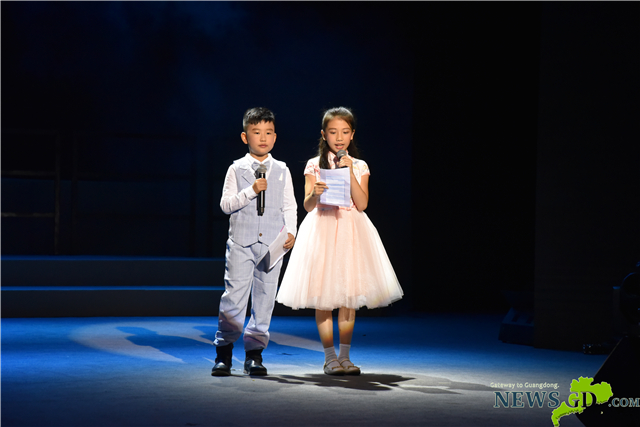
[Photo: Newsgd.com/Monica]


















